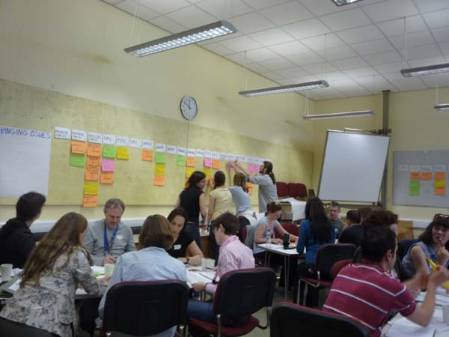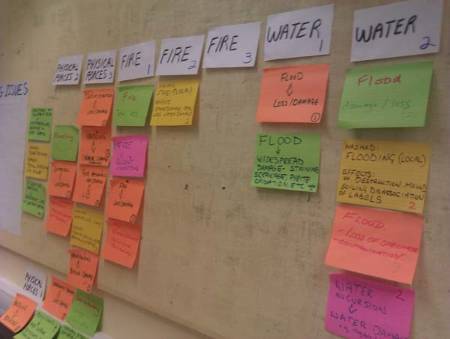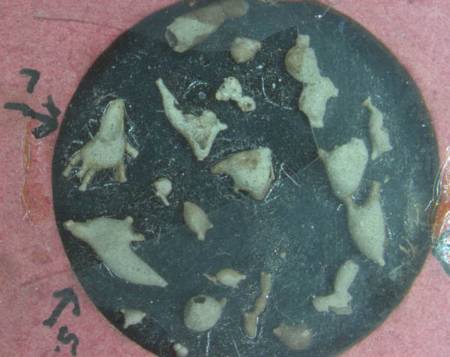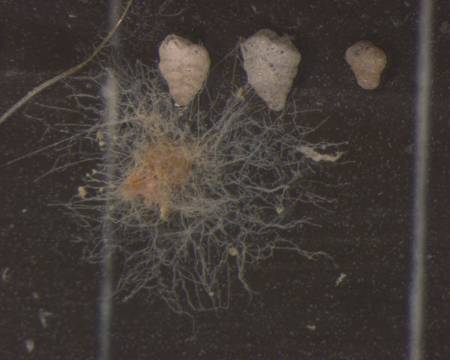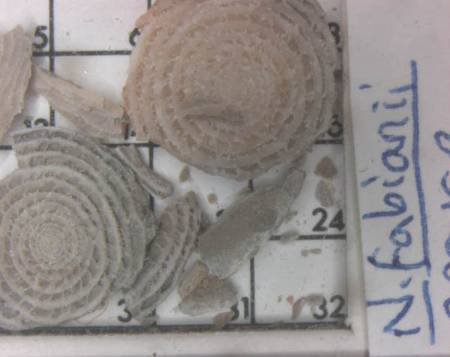Last week I attended a two day course on assessing and Managing Risks to Natural History Collections given by Rob Waller of Protect Heritage Corp and Canadian Museum of Nature. So are our collections under threat? The answer to this is yes. Lots of factors can threaten a collection's long term security: fire, water, theft/vandalism, pests, contaminants/pollution, light/UV radiation, incorrect temperature and incorrect humidity. There are even risks that information about the specimens might be lost and every time they are moved or handled there is a risk of loss or breakage. All risks to collections can be categorised under one or more of the 10 Agents of Deterioration.
A class exercise to identify specific risks to collections (top image courtesy of Rob Waller).
First we learnt how to properly quantify risks as words such as "significant risk" and "highly probable" are not particularly helpful as we found out when we had our first exercise to try to come to a class consensus about what these words really mean. Quantifying risks to collections is important as it can help to eliminate "political" situations where those who shout loudest or provide the strongest arguments get most resources to manage their collections. It can aso help in situations when limited resources are available and difficult decisions have to be made about what gets done.
So are there more risks associated with managing micropalaeontological specimens than any other specimens? Probably not. This course was a great opportunity to speak with other collections managers from the Museum to see the sorts of issues they face and see that we are all in the same boat. Is it harder to spot micropalaeontological specimens/collections at risk? Definitely. The size and nature of the specimens mean that expert knowledge and and a lot of time to look at material carefully under a good quality microscope are essential. Below are some images of specimens at risk. The field of view for each image is about 1cm. Please don't imagine that all our specimens look like these!
The glass is broken that covers these specimens so dust and other pollution can now get into the cavity. (The glass has since been replaced).
These specimens are suffering from dampness and have some fungus growing on them. (This occurred before the specimens were donated to the museum so the specimen is now isolated from the rest of the collection and kept at a good temperature and humidity to avoid further growth).
These specimens are loose and each time the drawer that housed them was opened they rubbed together and crumbled. (They are now stuck firmly to the slide that houses them).
We learnt that to calculate the risk we need to work out the percentage of specimens in our collections that could potentially be lost or damaged. This is where it gets harder to apply to the micropalaeontology collections here at the Museum as we don't have these details at present. A thorough condition survey is needed before we can properly quantify the risks.
Finally we learnt how to manage the risks we identified by avoiding, blocking, detecting, responding and recovering. The take home message that we all clearly found was that this needs to be a team effort. A conservator, fossil expert, curator or facilities manager can't make these judgements on their own but are all needed to provide the information needed to properly quantify risks to collections. The challenge in the future is to work effectively together to carry out a collections risk assessment for our whole collection, not just for Micropalaeontology or for Palaeontology but for the whole museum. Rob Waller's course has gone a long way towards helping us to do this.



